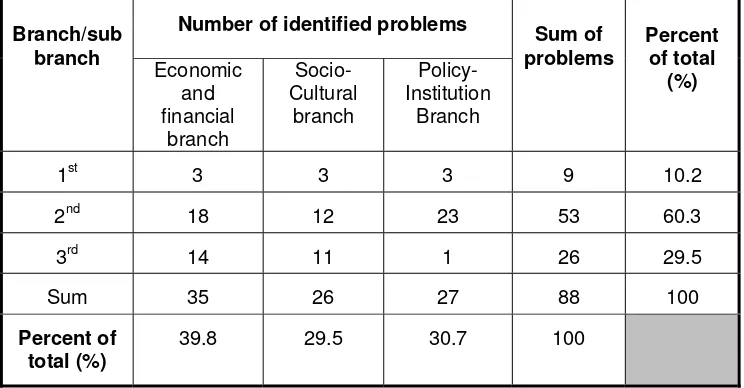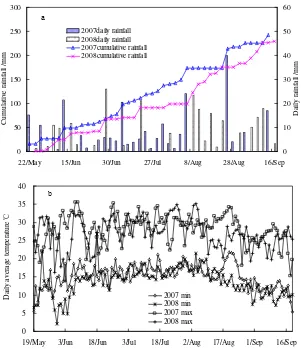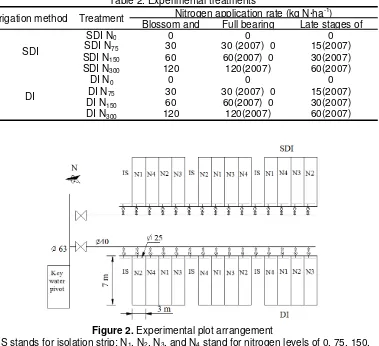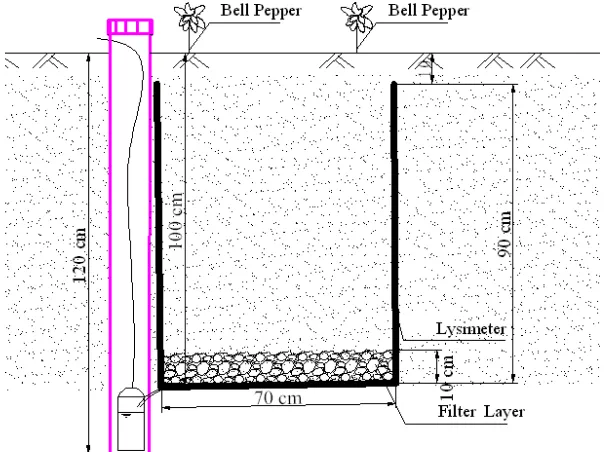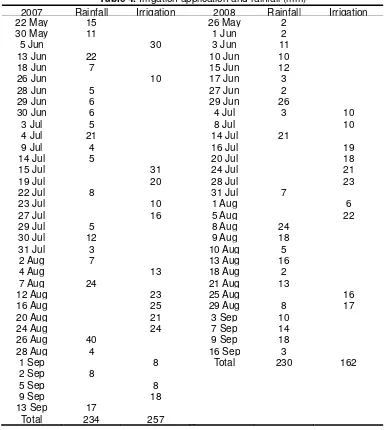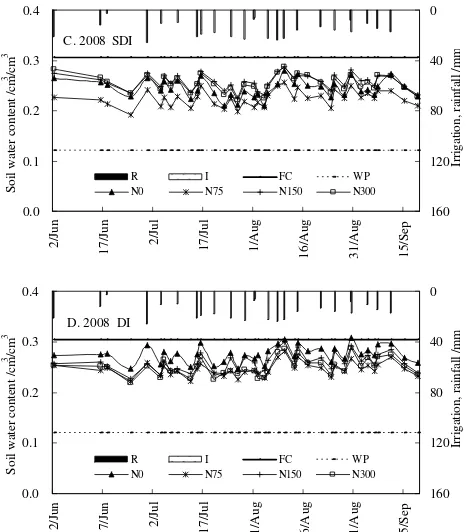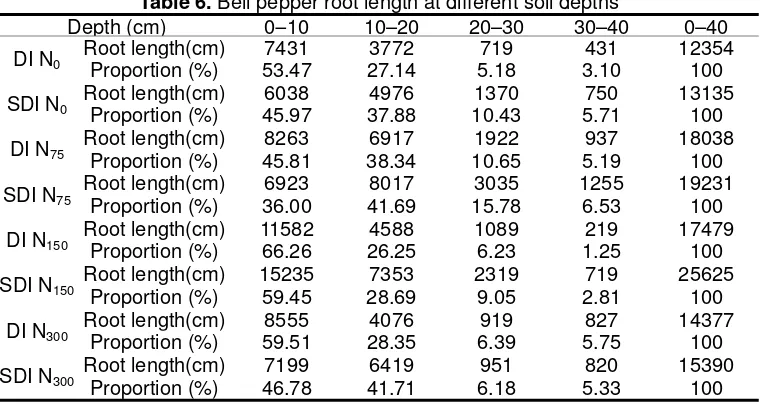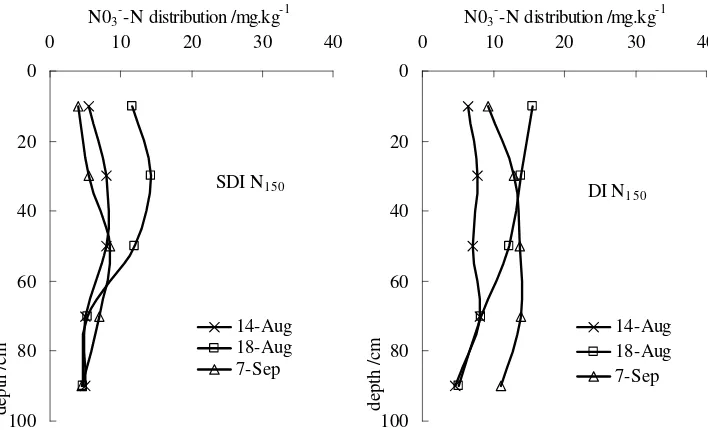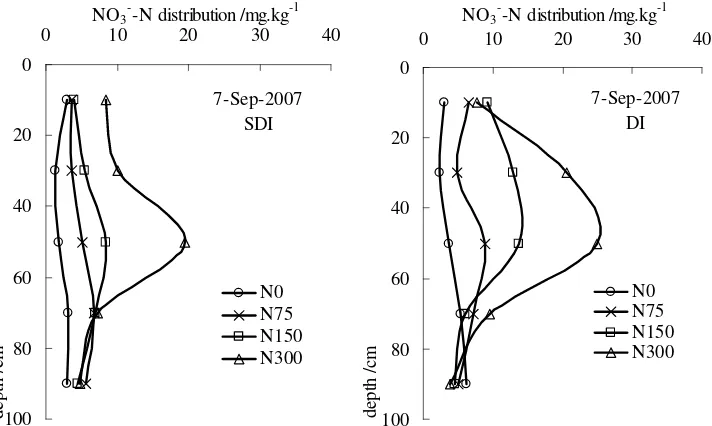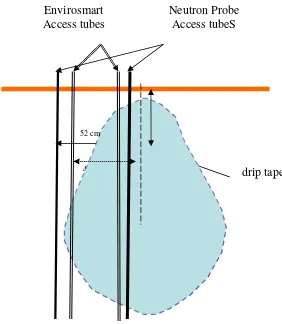8
th
International
Micro Irrigation Congress
Innovation in Technology and Management of
Micro-irrigation for Crop Production Enhancement
21 October 2011, Tehran, Iran
8
Theme
Introduc Global de growth a national l agricultur availabilit tackle su minimizin improved Water qu developm to use po other irrig expansio adaptabi8th Inte
e:
Inno
irrig
ction
emand for fo nd change o level. A majo re. However ty particular uch a comple
ng non-bene d agro-techn
uality is anot ment of irriga oor/ low qua
gation metho on micro-irrig
lity to varied
ernatio
21 O
ovation in
ation for
ood is likely t of diet. Many or portion of r, further exp
ly in arid and ex and multiv eficial losses nical practice
her impedin ated agricult lity waters b ods. Howeve gation which d soil and wa
onal M
October
n Technol
Enhance
to double in y countries a f this new foo pansion of ir
d semi-arid r variable situ s of water, re es.
g factor whic ure. Micro ir y way of flex er there are
need to be ater quality, l
icro Irr
2011, Te
logy and
ed Crop a
the next 25 are endeavo
od demand w rigated land regions. Mic ation, by allo educed ener
ch has to be rrigation has
xibility and b several bott reviewed an lowering of m
rigatio
ehran, Ir
Managem
and Wate
to 30 years ring to achie would be ful s is ironically cro-irrigation
owing highe gy requirem
e taken into a demonstrat better perform
tlenecks ass nd dealt with maintenance
on Con
ran
ment of M
r Produc
mainly due eve food sec lfilled from ir y limited by has shown er water use ents for ope
account for f ted a better mance comp sociated with h. Concerns e costs, incre
gress
Micro
ctivity
to populatio curity at a rrigated
freshwater a promise to efficiency, eration, and further compatibility pared to h further such as easing of life
on
o
y
duration of field distribution systems, innovation in technology to reduce capital costs, and developing crop specific management practices, etc.
Objectives
The objectives of the Congress are as follows:
• To share experiences in the use of new technologies and best management
practices in drip, micro-sprinkler, and other localized irrigation systems; • To review the status of use of micro irrigation for smallholders;
• To understand socio-economic and technological factors impeding expansion of drip and micro-sprinkler irrigation area.
Sub-themes
Papers were invited from experts, irrigation managers, researchers, government and private agencies, farmers, technicians and students to contribute with their knowledge and
experiences, by submitting papers on the following topics:
Group A
• Best management practices/ success stories of micro irrigation adoption;
• Lessons learnt from failures in up scaling micro irrigation
• Low cost and low energy consuming irrigation systems;
Group B
• Advances in operation and cost effective maintenance of micro-irrigation systems;
• Management and cost of micro-irrigation for large farms;
• Efficiency and productivity in micro irrigation systems
• Developments in Subsurface micro-irrigation;
• Use of low quality waters in micro-irrigation;
Group C
• Automation in micro irrigation;
• Micro irrigation in greenhouses;
• Micro-irrigation for small scale farms;
• Modeling, design and decision support system in micro-irrigation;
• Fertigation in microirrigation;
Group D
• Socio-economic consequences of the conversion of traditional systems to micro irrigation systems
• Analysis of long term sustainability of micro irrigation systems
• Technical performance and quality assessment of micro-irrigation systems.
CONTENTS
8th International Micro Irrigation Congress
Innovation in Technology and Management of
Micro-irrigation for Crop Production Enhancement
21 October 2011, Tehran, Iran
Sl. No. Title of the Paper Page No.
1
Micro Irrigation in Nepal: An Effective Tool to Fight Against Poverty
Kishor Kumar Bhattarai
9
2
Effect of Negative Pressure Difference Irrigation on Soil Wetting Pattern
S. M. Moniruzzaman, Teruyuki Fukuhara, Yoshihiro Ishii, and Hiroaki Terasaki
15
3 Automation in Micro Irrigation
Nasser Valizadeh 29
4
Socio-Economic and Policy-Institution Issues and Challenges in Sustainable Development of Pressurized Irrigation Systems in Iran
Nader Heydari and Hossein Dehghanisanij
43
5
Investigation the use of Non-Conventional Water (Salty and Brackish) Using Pitcher Underground Irrigation System in Greenhouse Grown Capsicum
Gholmali Keikha, Mahdi Keikha, Mohammad Keikha, Shirali Keikha, Khodad Dahmarde, and Fateme Keikhaei
52
6 Development and Evaluation of Mobile Drip Irrigation
A,Hezarjaribi and Heinz Sourell 56
7 Subsurface Drip Irrigation
H.S.Chauhan 59
8 Researchable and Promotional issues in Microirrigation
H.S.Chauhan 68
9 Improved yields with Mulching on Microirrigated Vegetables
H.S. Chauhan 79
10 Life of Microirrigation Components
H.S. Chauhan 91
11 Microirrigation in Green House
Sl. No. Title of the Paper Page No.
12
The Effect of Saline Water Under Subsurface Drip Irrigation on Cotton
Ghorban Ghorbani Nasrabad, T.B.S. Rajput, and Neelam Patel
102
13 Bell Pepper Response to Surface and Subsurface Drip Irrigation
Qinghua Kong, Guangyong Li, and Meng Guoxia 109
14
Restrictive Irrigation Under Subsurface Drip Irrigation in a Mediterranean Climate: Modelling Applications to a Loamy Soil with Corn
Mailhol, J.C., Ruelle, P., and Dejean, C
128
15
Response of Fragrant Pear Growth to Different Micro-Irrigation Conditions
Zhao Zhi, Huang Xingfa, Wu Yang, and Wang Wei
138
16
Impact Assessment of the Micro-Irrigation Under Limited (Scarce) Water availability in Small and Marginal Farmers Holdings of Karnataka, India
Ramana Gowda and Krishnamurthy Venkata Reddy
147
17
Model of the Soil Wetting Shape Under Drip Irrigation on Sloping Lands by Using Dimensional Analysis Technique
Farhad Mirzaei and R.S. Sharif Nia
150
18 Energy Saving in Pressurized Irrigation Networks
Nosratollah Assadi and Hamed Hadidian 159
19 Tissue Irrigation- A New Dimension in Micro-Irrigation
S Bhaskar and Mukund Joshi 166
20
Regulator Reservoir in Pressurized Irrigation Networks (Case Study Mosallase Givi Irrigation Network)
Nosratollah Assadi and Hamed Hadidian
173
21
The Impacts of Drip Tape Irrigation on Water Use Efficiency of Sunflower in Rotation with Wheat
Amir Nourjou
179
22
Performance of Nutrient Sources and its Levels on Hybrid Bhendi Under Drip Fertigation System
P.P.Mahendran, D.Arulkumar, A.Gurusamy, and V.Kumar
184
23
Study on the Influence of Irrigation Regimes and Fertigation Levels on Sugarcane Under Subsurface Drip Fertigation System
Gurusamy. A., P.P. Mahendran S. Krishnasamy, and V.Kumar
191
24
Micro-Sprinkler Irrigation and Fustigation and Land
Configuration as a Best Management Technology Package for Groundnut
R. Vijayalakshmi, V. Veerabadran, K.Shanmugasundram, and V.Kumar
Sl. No. Title of the Paper Page No.
25
Soil Evaporation in Surface and Subsurface Drip Irrigation in a Maize Field
Hanieh Kosari, Hossein Dehghanisanij, Farhad Mirzaei, and Abdol-Majid Liaghat
208
26
Compared Efficiency, Consumption and Waste of Energy Between Drip and Sprinkler Pumping Plant Irrigation
S. Rezvani, M. Farzamnai, A. Zolfagharan, and S. Amin
217
27
Effect of Drip Irrigation and Plastic Mulch on Yield and Early Harvest of Muskmelon Under Semi-Arid Climate Conditions
Akbari, M., Zaraei G., Sadre Ghaen, and Farhadi, A.
233
28
Development of a Software for Automatic Designing of Pressurized Irrigation Systems
Sa'eed Ojaghloo Shahabi and Majid Vazifedoust
243
29
Optimization of Water and Nutrient Requirement for Yield Maximization in Hybrid Rice under Drip Fertigation System
V. Kumar, A.Gurusamy, P.P. Mahendran, and S.Mahendran
256
30 Microirrigation in Iran- Current Statues and Future Needs
Hossein Dehghanisanij and Mehdi Akbari 264
31
Application of Brackish Water in Subsurface Drip Irrigation System on Pistachio Orchards
Amir Eslami and Hossein Dehghanisanij
275
32
Pressure Variation Impact on Discharge Characteristics of Porous Pipes
A. Janani, T. Sohrabi, and H. Dehghanisanij
284
33 Stochastic Deficit Micro Irrigation Optimization
Hosein Alizadeh and S. Jamshid Mousavi 297
34
Effect of Drip Irrigation and Fertigation Levels on the Yield and Quality of Muscat Grapes (Vitis Vinifera)
N.Asokaraja
305
35
Environment Monitoring and Estimation of Water Requirement inside a Polyhouse through Internet
Neelam Patel and T.B.S. Rajput
323
36
Solar Powered Constant / Continuous Move Central Pivot Irrigator
Padmakar Waman Kelkar
332
37 Drip and Filtration Equipment’s Performance
Felix B Reinders 338
38
Effect of Surface and Subsurface Drip Irrigation Methods and Irrigation Frequency on Cotton Yield and Water Use Efficiency
Jolaini, M. and Zarei, Gh
Sl. No. Title of the Paper Page No.
39
Effects of Moisture Regimes and Plastic Mulching on Tomato in Surface and Subsurface Drip Irrigation Methods
Jolaini, M., Gh. Zarei, and A.R. Saffari
357
40
Effects of Irrigation Frequency and Water Cut-Off in Drip Tape Irrigation on Yield and Water Use Efficiency in Potato Cultivars
Jolaini, M., M., Kazemi, and Gh. Zerei
364
41 Drip Irrigation Scheduling of Citrus Orchard in Tunisia
Abdelkader Hammami and Hafedh Jamil Mellouli 369
42
Evaluation on the Irrigation Water Temperature Changes
Influencing the Compensating and Non- Compensating Emitters Hydraulic Properties
Ali Heidar Nasrolahi, Majid Behzad, Saeed Boroomand Nasab, and Faramarz Judy
383
43
Micro Irrigation Technologies for Enhanced Crop and Water Productivity-Experiences of Andhra Pradesh, India
K Yella Reddy and T V Satyanarayana
392
44
Economic Comparsion of Surface and Subsurface Drip Irrigation Methods and Irrigation Interval on Cotton Yield
Shojaat Zare
401
45
Economic Effects of Changes of Surface Irrigation to Micro Irrigation Systems in Mashhad Plain, Iran (Case Study)
Baghani. J, Sh. Zarea, and Khalednezhad. H.R
408
46
Impact of Drip and Level Basin Irrigation on Growth and Yield of Winter Wheat in the North China Plain
Wang Jian-Dong, Gong Shi-Hong, Xu-Di, Yu Ying-Duo, and Ma Xiao-Peng
417
47
Effects of Fertigation Uniformity on Cotton Yield and Quality Under Arid Conditions
Hongjie Guan, Jiusheng Li, and Yanfeng Li
435
48
Corn Growth and Yield as affected by Drip Irrigation Uniformity and Application Amount in North China Plain
Hang Zhang and Jiusheng Li
449
49
Nitrogen and Potassium Citrus tree Uptake, Fruit Removal and Seasonal Distribution in the Root Zone under Improved
Fertigation Management Program
Abdelkader Hammami, Hafedh Jamil Mellouli, and Mustapha Sanaa
462
50
Challenges of Converting to Efficient Water Saving Irrigation in Syria
Shuichi Matsushima, Awadis Arslan, and Bassam Al-Husein
Sl. No.
51
52
53
54
55
Pressure R System
Momon Sod Simanjunta
Food Secu Microirriga
S.P. Jadha
Achieving
Lily Mitra
Applied De
D. Yewalek
Method, Sy Irrigation o
Seyyed Ha
Resistant Em
dik Imanudin ak
urity Throug ation in Indi
v
Targeted G
esign Conc
kar and M. K
ystem, and of Regular a
di Abtahi
Us
Title of t
mitter Desig
n, Robiyanto
gh Technolo ia
Growth Thro
ept: Zero E
Kinge
Apparatus and Irregula
se Page N
the Paper
gn for the T
o Hendro Su
ogical Interv
ough Micro
nergy Micro
of Radial Ir ar Lands
No. for Na
Trickle Irriga
uanto, and B
vention of
Irrigation
o Irrigation
rrigation an
avigation
ation
Bistok
System
nd
Page No
489
496
501
509
MICRO IRRIGATION IN NEPAL: AN EFFECTIVE TOOL TO
FIGHT AGAINST POVERTY
MICRO IRRIGATION IN NEPAL: AN EFFECTIVE TOOL TO
FIGHT AGAINST POVERTY
Kishor Kumar Bhattarai
1INTRODUCTION
Non Conventional Irrigation Technology Project (NITP) was established on 2003 A.D. to develop and promote other than conventional irrigation technology/ies and techniques. Its aim is to develop irrigation systems incorporating efficient technologies for both to the under irrigated areas as well as to areas where conventional irrigation systems is not possible due to reasons like high development cost, insufficient quantity of water, unsuitable geology, land and soil, etc hence designated as non irrigable. Rescuing poor from vicious cycle of poverty and uplifting women, disadvantaged and marginalized groups of people economically are the ultimate goals of this project. Apart from basic objective of providing irrigation to otherwise dry lands it has been successful in lessening social discrimination emanating from social and economic inequality such as poverty, illiteracy, gender, and cast system.
At present NITP is promoting micro irrigation technologies and developing efficient irrigation system for such technologies. Micro irrigation in Nepalese context is "micro both in terms of command area size as well as in application" rather not only in application at micro level as in other developed countries. Hence, very small irrigation systems using simple drip and micro sprinkler for water application are among the non conventional irrigation systems. But present understanding of micro irrigation system only as synonym to small irrigation will eventually hamper the progress of non conventional irrigation development in Nepal.
1. NEPAL
Nepal with total area 147181 sq km. and population about 28 millions is a South Asian country sandwiched between emerging world economic powers India and China. Nepal can be broadly divided into three geographical regions i.e. High Mountains, Mid Mountains and Low land plain area. Chure range is small hilly area between mid mountain (Mahabharat) and plain area (Terai). Elevation ranges from 65m to 8840 m above MSL from south to north within a short span of about 200 km. Nepal is very rich in water resources which, is yet to be harnessed. Terai, covering 18% of total area, is comparatively fertile plain area in northern tip of indo-gangetic plain. Remaining 82% is covered by mountain. Per capita income is less than 460 US$ with above 60% of its population engaged in agriculture. Contribution of agriculture sector in GDP is more than 30%. Main agriculture products are rice, wheat, pulses, tea and sugar cane. Main staple food is rice. Agriculture productivity is well below world standard.
Nepalese society is cast based discriminatory and patriarchal where women are subjugated both economically and physically. Poverty is rampant among lower cast but not limited to them.
1.1 Overall Irrigation Status
Total cultivatable land in Nepal is about 2640 thousand hectares, out of which only 1766 thousand hectares is categorized as irrigable. Remaining 874 thousands hectare are non irrigable as conventional irrigation schemes are unfeasible for these areas.
Inclusive of irrigation systems for 636 thousand hectares developed by farmers themselves irrigation infrastructures are already built for total 1252 thousand hectares which is 47% of total agriculture land and 71% of total irrigable land. Almost 50% of theses irrigation systems built by farmers have received government assistance for upgrading and maintenance. Only 46% of irrigated land or 22% of total agricultural land has year round irrigation facility.
2.1 Non Conventional Irrigation System: Nepalese Context 2.1.1 Objective of the NITP
Objective of the NITP is to implement the micro-irrigation program for disadvantaged group, marginal land and farmers, severely water deficit areas and provide an effective micro-irrigation service delivery mechanism with high value crop production support for poverty alleviation.
2.1.2 Non conventional irrigation system
Water acquisition and its application, if both of them or any one of them, is not conventional in nature than it is non conventional irrigation system. Hence, irrigation system which includes one or more than one of the following components is non conventional irrigation system.
1. Drip 2. Sprinkler
3. Treadle Pump (Manually (by feet) operated ground water extracting machine) 4. Low cost water storage (Thai jars, soil-cement or plastic lined) tanks
5. Rain water harvesting
2.2 Project Area, Priority, Budget and Present Status
The sub projects are scattered throughout Nepal. Based on experiences gained so far it has been observed that non conventional irrigation schemes are most useful and necessary for mid hill and inner terai (area between mid mountains and Chure). But developments of non conventional irrigation sub projects are not restricted to these areas only. While treadle pumps are used in terai, schemes with drip and sprinkler technologies are being promoted mainly in mid mountain and hills.
development of conventional irrigation. Similarly access to market or potential for future market development in nearby areas is assessed.
Total budget allocated to NITP has gradually increased from US$ 0.54 million for the FY 2007/08 to US$ 1.46 million for the FY 2010/011. While total estimated cost of 223 ongoing projects is US$ 6.2 million only US$ 1.46 million is allocated in this fiscal year. Nearly 94% of the allocated budget is used for civil works of project.
At present 223 sub projects in 74 districts2
A. Simple Drip
with total command area 3300 ha are under construction. It is expected that 40 of these projects will complete by the end of fiscal year 2010/11 providing irrigation to additional 501 hectare of land. About 90% of the sub projects have command area less than 20 ha.
Already completed 135 projects, with total expenditure of US$4.2 million, in 44 districts can irrigate about 2558 ha. if utilized properly as most of the projects are intended for drip irrigation schemes and designed accordingly.
Simple drip system is very simplified form of modern drip technology. Holes are punched in 8mm lateral pipes to act as emitters. Pressure is generated by placing tank (capacity 60 ltrs) about 1 meter above the ground.
B. Micro Sprinkler
Micro sprinkler have very small coverage of about 4 meters in diameter. They can be operated under 7 to 10 meter head. Small area of coverage is specially suited for small terraces in mountains.
Table 1: Cost of Simple Drip and Micro Sprinkler System
System Size Irrigation
Capacity
Retail Price (Without/With tank3
Remarks )
US$
Simple Drip System Very small 90 sqm 10.76-14.13 4 Drip lines
Simple Drip System Small 125 sqm 15.45-18.98 6 Drip lines
Simple Drip System Medium 250 sqm 27.74-31.34 8 Drip lines
Micro Sprinkler System
Small 250 sqm 11 4 risers
Mini Sprinkler System
Small 250 sqm 9.63 2 risers
Apart from NITP different I/NGOs are also involved in micro irrigation development (Table 2). Some of these organizations which were active even before government started its initiative are still active in micro irrigation development in Nepal.
Table 2: Different Organizations Involved in Micro Irrigation Development and their contribution
S. No.
Organization
Hectare
House Holds
Hectare per HH
1
ADB/N4 28987 29035 0.9982
IDE5 9815 119406 0.0823
SISP6 2280 7800 0.2924
NITP7 2558 6800 0.3765
DEPROSC3 1211 4139 0.2936
SAPROS3 335 3852 0.0877
MDI3 168 1001 0.1688
CEAPRED3 129 741 0.1749
VDRC3 21 229 0.09210
HELVETAS2 5 27 0.18545509 173030 0.262
Comparatively larger average landholding per household in ADB/N invested areas is clear indication of undue influence by comparatively wealthy farmers to government agency. Contrary to this in the projects developed by I/NGOs majority are small farmers as indicated by average land holding size. This is one of the reasons behind the success of their initiative.
3. Beliefs and Achievements of NITP
NITP firmly believes that development is a right not a generosity. For NITP Development is not only a matter exclusively of economic growth and increase in gross domestic product. Projects of this size do not have substantial impact in GDP. NITP firmly believes that genuine change is most often rooted in small communities of poor people and NITP can play very important role in this change. Hence, all neglected areas and communities are primary target of NITP development.
NITP believes in positive discrimination and attention to vulnerable group. Affirmative action is needed to correct, offer remorse and compensate for neglect and seclusion of disadvantaged group since historical times. Obviously positive discrimination is their right, not plead for sympathy. For NITP all those who cannot claim their rights or are voiceless are potential beneficiaries as it is not a matter of cast but it is state of being powerlessness resulting from poverty and lack of education which are proving to be more detrimental for the cause of social justice.
Social inclusion and women empowerment are other two areas of major achievements of NITP’s micro irrigation schemes. Objective of social inclusion is being achieved through overall participatory process. Through this process decisive participation of all irrespective of their cast, race, religion, gender and economical status is ensured in each stages of development. Mandatory provision of 35 percent women in WUA's (Water User's Association) executive committee is helping in women's empowerment by installing confidence in them and providing opportunity for leadership. At the same time this process is successfully creating awareness among the disadvantaged group (poor, women, lower cast and ethnic group) in the community, helping them to organize, empowering them for decision-making so that
4- ADB/N: Agriculture Development Bank Nepal (semi government organization) 5- International Non Governmental Organizations
6- Local Non Governmental Organizations
they can identify and prioritize their needs. It is also building up user's capacity for preparation, implementation, operation and management of subprojects in other areas as well to enhance their livelihoods.
User's committee is providing platform to disadvantaged group to mingle with others, which is invaluably instrumental in raising their level of self confidence. In addition to this the democratic process adopted in electing executive members of WUA is another important feature helping in social inclusion.
Leadership ability and sense of economic independence are very important in women's empowerment as these two factors have direct impact on individual identity, dignity, self respect and social standing. Leadership ability comes from knowledge and capability to demonstrate and implement such knowledge. NITP is instrumental in increasing women's confidence level by giving them leadership opportunity through WUA, improving their leadership quality by involving them in various micro irrigation and agriculture related trainings, participation in user’s committee activities, interaction programs and introducing sense of freedom in them by including them in "away from home" farmers tour program. Economic independence is achieved through control over resources i.e. by selling agro products and controlling the returns. In small micro enterprises such as small micro irrigation supported agricultural activities women benefit in particular, because their say over the output of homestead based activities tends to be stronger than for other sites of agricultural production.
4.
Scope for non conventional irrigation schemes
The potential agricultural land area for non conventional irrigation development in Nepal is around 1000 thousand hectare which is summation of non irrigable and under irrigated land. Further, it is possible to increase irrigation capacity of present irrigation infrastructures drastically with adoption of efficient drips and sprinklers for water application.
Nepal being a mountainous country with fragile geology poses tremendous challenge from stability point of view. Landslides, slope failure, rock fall or any other form of soil mass movement is common along the canal alignment both due to natural cause and due to human intervention. As pipe is used for water conveyance in Non conventional systems it requires very little excavation works hence induces less disturbance to natural geomorphology. This makes such schemes more appropriate in Nepalese context.
Areas under cultivation in hill and mountain region are either terraced or sloppy land. Soil erosion rate is high from such areas which is further aggravated by conventional surface irrigation. Irrigation technologies which use small quantity of water such as drip and sprinkler are helpful to mitigate soil erosion from such land.
Seepage and deep percolation loss is high because of high porosity and shallow depth of soil in mountainous region. Drip and sprinkler are most appropriate application technologies to minimize the loss of water as well as nutrients.
The economical status of majority of people and average land holding per family has further made micro irrigation more relevant.
5. Problems in Micro Irrigation Development in Nepal
accustomed with flooding methods of irrigation have doubts about these systems meeting crop water requirement.
Drip sets developed in Nepal are of very small capacity as largest set can cover 1000 sq.m. Only Hence big farmers who have capacity to lead small farmers in vegetable farming and marketing are not attracted towards it. These poor small farmers would have followed big farmers had they used these technologies.
Changing present cropping pattern which is being practiced since centuries is another major problem. Paddy cultivation has attained status of religion or culture. Hence switching over to high value crops like vegetables is not taking place at desired pace? NITP is also facing serious problem of lack of budget. Budget allocated is minimal compared to the coverage of NITP and large number of projects under construction. Due to unavailability of sufficient budget; even for such small projects; it is taking more than anticipated time (1 to 2 years) to complete. This is totally against most strong argument in its favor that is "being small it can be completed in very short period and benefit can be ripped immediately".
Unwanted interventions by political leaders in project selection and compelling executing agencies to implement unfeasible projects is also harming the progress of NITP.
6. Conclusion
Topography of the country, poverty level, land fragmentation etc makes it imperative to promote micro irrigation in Nepal.
The achievements of NITP in Socio-Economic sectors are indeed remarkable. Economic independence, leadership quality, self-identity and confidence, which are key ingredients in achieving women's empowerment, are major moral boosting achievements. Similarly, NITP is playing very important and effective role in lessening social discrimination, exclusion and seclusion of deprived and destitute populace. Development induced by NITP kind of projects are in real sense "development with human face" where most deprived, marginalized and excluded sect of people are benefited and experience positive changes brought by it. These achievements in Socio-Economic sectors are indeed remarkable.
More training and motivational programs are needed to convince more farmers to adopt these technologies and switch over to high value crop farming. Either by government or through I/NGOs with government support this initiative must continue.
References
1. Bhattarai, K. 2010. Non conventional Irrigation Technology Project: An Introduction. Irrigation News Letter. 58: 4-5.
2. Bhattarai, K, 2011, Climate Change and Non Conventional Irrigation Technologies, Irrigation News Letter, 60:4-7
1- PhD Scholar, Environmental Heat and Hydraulics Laboratory, Department of Architecture and Civil Engineering, University of Fukui, 3-9-1 Bunkyo, Fukui 910-8507, Japan; Telephone: 81-776278595, Fax: 81-776278746, E-mail: monir92us@yahoo.com
2- Dr. of Eng., Professor, Environmental Heat and Hydraulics Laboratory, Department of Architecture and Civil Engineering, University of Fukui, 3-9-1 Bunkyo, Fukui 910-8507, Japan; Telephone: 81-776278595, Fax: 81-776278746, E-mail: fukuhara@u-fukui.ac.jp
3- Dr. of Eng., Associate Professor, Dept. of Civil Engineering and Urban Design, Hiroshima Institute of Technology, 2-1-1 Miyake, Saeki-ku, Hiroshima 731-5193, Japan; E-mail: ishii@ycc.it.hiroshima.ac.jp 4- PhD Student, Environmental Heat and Hydraulics Laboratory, Department of Architecture and Civil
Engineering, University of Fukui, 3-9-1 Bunkyo, Fukui 910-8507, Japan
EFFECT OF NEGATIVE PRESSURE DIFFERENCE
IRRIGATION ON SOIL WETTING PATTERN
EFFET D'UNE IRRIGATION SOUS DIFFÉRENCE DE
PRESSION NÉGATIVE SUR LE SOL MOUILLANT MOTIF
S. M. Moniruzzaman
1, Teruyuki Fukuhara
2, Yoshihiro ISHII
3and
Hiroaki Terasaki
4ABSTRACT
Negative pressure difference irrigation (NPDI) is considered to be a highly efficient water saving method, which consists of a porous pipe and a water reservoir. The water use efficiency of the NPDI is higher than that of other irrigation methods such as surface irrigation, sprinkler irrigation and drip irrigation. In order to investigate the effect of negative pressure difference on the soil wetting pattern and water balance of the NPDI, laboratory experiments were carried out using a soil column in a temperature and humidity controlled room. The supplied water (Msup), soil water
storage (Msoil), evaporation (Meva), wetted soil surface area and configuration of
wetted soil around the porous pipe were measured for three different negative pressures. Empirical equations were proposed for the calculation of wetted soil volume, Msoil, Mevaand Msup.
The proposed simple methodology could well reproduce the temporal variations in the wetted soil volume, water use efficiency, Msoil, Mevaand Msup.
RÉSUMÉ ET CONCLUSIONS
Le manque d’eau est une contrainte majeure dans le domaine de l’agriculture en milieux arides et semi-arides. Le système d’irrigation sous différence de pression négative (NPDI) pourrait être un des meilleurs moyens pour économiser cette eau étant donner qu’il dirige l’eau directement vers la racine de la zone visée. Le système NPDI est composé d'un tuyau poreux enterré verticalement dans un sol, un conduit d'alimentation en eau et un réservoir d'eau. Le réservoir est placé à une hauteur inférieure à celle du tuyau poreux de manière à obtenir une différence de pression négative, notée Pn, dans le tuyau poreux. Lorsque le potentiel matriciel, noté ψ, du
sol environnant est inférieur à la pression Pn, l’eau va alors se déplacer du réservoir
vers le tuyau poreux et s’écouler dans le sol environnant. Au contraire, lorsque ψ est supérieur à Pn, l’écoulement s’arrête automatiquement sans aucune opération
le système NPDI. La présence d’un sol humide autour du tuyau poreux affecte l’efficacité de l’eau utilisée dans le domaine agricole. C'est pourquoi, il est important de comprendre la relation entre la configuration du sol mouillé et Pn au fil du temps
l'approvisionnement en eau.
Ce document vise, dans un premier temps, à décrire l’influence d’une différence de pression négative sur un sol humide autour d’un tuyau poreux, et, dans un second temps, à prédire une méthode simple d’équilibre de l’eau au sein du système NPDI. En vue d'atteindre l'objectif ci-dessus, un test d'équilibre de l'eau du système NPDI a été réalisée à une température et humidité ambiante contrôlée (25°C et 30%, respectivement) pour trois différents Pn (-0,02 m, -0,07 m et - 0,10 m H2O).Une
colonne de terre (diamètre = 0,20 m et hauteur = 0,21 m) a été remplie avec du sable Kawanishi, celui-ci ayant une densité à sec de 1410 kg/m3. Un tuyau poreux (longueur = 0,1 m, rayon extérieur = 12,5 mm et épaisseur = 6 mm) a été enterré verticalement au centre de la colonne de terre. Pn représente la différence de hauteur
entre la surface de l’eau dans le réservoir et le milieu du tuyau poreux, comme le montre la Figure 2. Deux balances électriques (pesée minimum = 100 mg) ont été utilisées pour mesurer simultanément la masse d’eau cumulée dans le réservoir, notée Msup et la masse d’eau cumulée dans le sol, notée Msoil. Par différence (Msup –
Msoil), l’évaporation cumulée peut alors être déterminée, celle-ci étant noté Meva.
Enfin, la terre sèche a été séparée de la colonne de terre dans le but d’évaluer la configuration de la terre humide à t = 24 h, t = 48 h et t = 72 h.
Les principales conclusions tirées de cette étude sont les suivantes :
(1) Précision de mesure des Msup et Msoila été assurée par le résultat, Msup =
Msoil, obtenu à partir d'un test d'équilibre de l'eau. Dans cet essai, l'équilibre
de l'eau, l'évaporation n'a pas été autorisée à partir de la surface du sol. (2) L’équation empirique pourrait concorder avec les résultats expérimentaux
concernant la variation du temps au sein de Msup, Msoilet Meva, ainsi qu’avec
l’expansion du temps d’humidité du sol.
(3) L’efficacité de l’utilisation de l’eau (=Msoil/ Msup) est comprise entre 1 et 0,92.
De plus, l’efficacité accroit lorsque Pn diminue.
(4) Cette méthode est efficace pour l’évaluation de l’équilibre de l’eau du système NPDI.
1. INTRODUCTION
Water loss due to evaporation, deep percolation below the root zone and conveyance of water from the source to the agricultural field cannot be avoided in irrigation systems. In a sprinkler irrigation system, spray losses can become as high as 45% under extreme weather conditions such as bright sunlight, high temperature and low humidity (Frost and Schwalen, 1955). Irrigation techniques that help save water are indispensable to regions and countries with limited water resources and severe external evaporation conditions. The water wasted in the NPDI is less than that of the drip irrigation (Yabe et al., 1986). NPDI system is a kind of subsurface irrigation and is composed of a water reservoir and a porous pipe installed in soil. The water reservoir is placed at a lower elevation than the porous pipe to generate negative pressure, Pn.
NPDI system may be divided into two categories according to the installation direction of the porous pipe, i.e. horizontal and vertical installation.
Besides tha technique, i system and discussed i develop a s balance in a
In the NPD reservoir an the soil wate than the neg reservoir to surrounding stops autom (supplied wa
Pn|. Saving
which is in wetting proc
Figure 1. M
Figure 2 s temperature chloride pipe with a heigh with Kawani porous pipe was installe Marriott tube the differenc intermediate at, intelligent including NP the water n the past simple meth a NPDI syste
2.
DI system, w d a porous p er matric pot gative press the porous soil. On the matically with
ater rate) is water can b proportion t cess of the so
Mechanism of du système
3
hows a sc e and humidi e (diameter = ht of 0.03 m
ishi sand wit (length, l =
ed vertically e in a water s
ce in elevat e elevation of
t operation PDI, would
use efficienc studies. Th hodology for m with a vert
MECHAN
water moves pipe installed tential (herea sure in the p pipe and th e contrary, w
hout any ar in proportion be enhanced to the NPD, oil progresse
fanegative p e d’irrigation
. EXPERI
chematic dia ty controlled = 0.20 m and
each and u th a bulk den
0.1 m, outer in the cente supply tank w tion between f the porous
and manag depend on cy. The wat
erefore, an r predicting
tically installe
NISM OF A
s in a wate d vertically in after referred porous pipe, hen percolat when ψ is eq rtificial work n to the neg d by the NP lessens or es.
pressure diff par différenc
IMENTAL
agram of th d room (25°C d height = 0 sed as a so nsity of 1410 r radius, Rp=
er of the so was used to n the water
pipe (b-b) (s
gement of a the water b ter balance
experiment soil wetting ed porous pi
A NPDI SYS
r supply co n the soil as s
d to as matric
Pn, water m
es through t ual to or larg . The suppl gative pressu PD because becomes z
ference irriga ce de pressio
PROCEDU
he experime C and 30%, r .21 m) was c il column. T 0 kg/m3 for a = 12.5 mm a oil column a keep Pn con
r surface in see Figure 2)
any subsurfa balance in t has been, h tal study is g pattern an
pe.
STEM
nduit that li shown in Fig c potential), moves up fro the porous ger than Pn,
lied water p ure differenc
the supplied ero automat ation system on négative)
URE
ental arrang respectively) composed o he soil colum all experimen and thickness as shown in nstant. Pn wathe reservo ). ace irrigation the irrigation however, no essential to nd the wate
nks a wate gure 1. When
ψ, is smalle om the wate pipe into the
the seepage per unit time ce (NPD), |ψ
d water rate tically as the
(Mécanisme
gement in a ). A Polyviny
f seven rings mn was filled ntal cases. A s, tp = 6 mm
Water was pump to rem reading of 0 supply tank, to measure t the other b reservoir (su intervals. Ev
Msup:
For easy ev was wrappe accuracy te simple wate the water ba 0.02, - 0.07
After measur removed fro photograph visualized an was collected was obtained measured at 4.1 Measure Figure 3 sh measureme i.e. the mea during the co
circulated be move air bubb .1 g were pla respectively the amount o alance was upplied wate vaporation fro
valuation of t ed so that ev est). Conseq r balance of alance test w
and - 0.1m H
Figur
ring Msupand
om the soil in Figure 4 nd measured
d in a heat -p d by the grav t three elapse
4
ement accu hows the te nt accuracy asurement e ourse of the
etween the bles in the si aced under t y. The electri of water stor used to me er), Msup,sim
om the soil s
the measure aporation fro quently, the f Msup = Msoil
was carried H20).
re 2. ASche (Schéma
d Msoil at the
column whil ). Subseque
with a came proof tray and vimetric soil sa
ed time, t = 24
4. RESUL
racy emporal var
test for Pn =
error (= |Msup
experiment.
porous pipe ilicon tube. T the soil colum
c balance pl red in the soi easure the ultaneously. surface, Meva
su
eva M
M
ement accura om the soil s
measureme
l. After this m
out for three
matic diagra a du test d’éq
end of the te e taking off ently, the co era and a sca d the volumet ampling meth 4, 48 and 72
TS AND D
riations in M
- 0.02 m. T
p-Msoil|/Msup)
e and the re Two electric b
mn and unde aced under t il, Msoil (soil w
amount of w All data we
a, was given
soil
up M
acy of Msup a
surface was p ent accuracy
measuremen e different ne
am of a water quilibre de l’e
est, dry soil a f seven rings onfiguration o ale, respective tric water con hod. All data
hours.
DISCUSSIO
Msup (> 0)
he difference was negligi
servoir by u balances wit er the reservo
the soil colum water storage
water suppl re recorded by subtracti
and Msoil, the
prevented (m y was evalu nt accuracy w
egative pres
r balance tes eau)
around the we s one at a of the wettin ely.Finally, th ntent of the w
except Msupa
ONS
and Msoil (<
e between M
bly small (1
using a smal th a minimum
oir and wate mn was used e, SWS), and ied from the at 60-minute ing Msoilfrom
(1
e soil column measuremen uated for the
was secured sures (Pn =
st
etted soil was time (see a ng front was he wetted so wetted soil, θm
and Msoil were
< 0) for the
Msupand Msoil
4.2 Soil wet Figure 4sho 0.10 m, resp A small pho
Pn = - 0.02
horizontal pl assumed to proposed fo The volume
where r is th Rm is the
correspondin the wetting f wetting front parameters. integration: After substit porous pipe tting pattern ows the obse pectively. otograph in
m at t = 24
lane. Howev be similar t r calculating of a truncate
Figure 3. (L'équilibr
he radial coo maximum ra ng to Rm an
front and the t (H, Rmand
The trunc
uting Eq. (2) from Vt and
n
erved wetting
Figure 4 sho hours. The ver, in the ve to a truncate
the wetted s ed ellipsoid is
. Water balan re de l'eau da
R r
ordinate, z is
adial spread nd B is the d
e vertical coo
B) are defin
ated ellipso
Vt
) into Eq. (3), d is given by
g front at t =
ows the wet configuratio rtical plane, ed ellipsoid. soil volume, V
s given acco
nce in meas ans l'essai d'
2 2 2 B H z R r ms the vertical d of the we
istance betw ordinate of R
ned in Figure oid volume,
r
H B
0 2, Vwet is obta
the following
=24 hours for
tted soil aro n of the wet the configur Consequent
Vwet.
ording to Aca
urement acc 'exactitude d
2 1
H
coordinate etting front ween the ma
Rm . The repr
e 4.H, Rman
Vt, is deri
z dzained by subt g equation:
r Pn = - 0.02,
ound the por tted soil is c ation of the w tly, a simple
ar et al., 2009
curacy test de mesure)
(z = 0 : the
, H is the
aximum vertic resentative le nd B are calle
ived from t
tracting the v
, - 0.07 and
rous pipe fo circular in the
wetted soil is e approach is
9:
(2
soil surface) e value of z
cal spread o engths of the ed geometric the following
(3
Figure 4. mo
Figure 5sho The former w was obtaine photographs truncated el expanded w relation of P
Figure 6 sho geometric pa 0.10 m).Sol
Wetting fron uillage dans
V
V
wet
t
ows the com was obtained ed from the s and with a llipsoid as lo with the decr
Pn to the temp
ows the exp arameters a id lines in Fig
w
nt in vertical p le plan verti
B
R
l
R
m p 23
mparison bet dby substitu e configurat ruler.It is s ong as Kaw rease in |Pn|poral variatio
pansion of th ssociated wi gure 6 expre
where q = 0.0
plane for diff cal pour diffé
B
H
B
m2 2
tween the ca uting B, H an
tion of the seen that the wanishi sand
at the same ons in H, Rm a
he wetting fro ith the chang ess Eqs. (5),
q pt H j m it R n mt B
05, j = 0.14,
ferent negativ érentes press
2
2
B
H
alculated Vwe
nd Rm measu
wetting fro e wetted soil is used. S e t (see Figu
and B.
ont, i.e. the ge in Pn (for
(6) and (7) f
n = 0.14 an
ve pressures sions négativ
R
l
H
p2et and the ob
ured in Eq. (4 ont, measure can be con ince the we ure 4), we e
temporal inc
Pn = - 0.02,
for24 ≤t≤ 72
nd
s (Front de ves)
(4
bserved one 4). The latte ed from the nsidered as a etting front is examined the
Figure 5
The relation regardless o Figure 7 sh observed Vw
is seen that
Figure 6. T
5. Accuracy o
n between e of Pn as long
hows the co
wet. Vwet was
Eq. (4) is ap
Temporal var temporel
p
of wetted soi
i
m
each of the as Kawanish omparison of
calculated b pplicable to p
riations in ge les des para
07 .
0
Pn
p
il volume (Pr
10 .
0
Pn
i
06 .
0
Pn
m
geometric hi sand is us f the tempo y substituting redict the va
ometric para amètres géom
08 .
0
récision du vo
04 . 0 04 . 0 parameters sed. oral variation
g Eqs. (5) th alue of Vwet.
ameters, H, R
métriques, H
olume de so
and t has
ns in the ca hrough (10) in
Rm and B (Le
H, Rmet B)
(8 l mouillé) (9 (10 a similarity alculated and nto Eq. (4). I
Figure 7. C volume (Co
4.3 Soil wa Figure 8sho
Pn. The time
with a decre Time depend
In Eq. (11), t
Comparison o mparaison d
ater storage owsthe tem e gradient of ease in |Pn |.
dency ofm f
the co-efficie
ofobserved des valeurs o
du volu
poral variatio m, dm /dt, i
for each Pn c
ents, s and u
s . 4 u andcalculat observées et ume de sol m
ons in the vo s very small
can be expre
mu
are given in
08 .
0
Pn
s
1 . 0 35 . Pn2
ted temporal calculées de mouillé)
olumetric wa for t 72 ho
essed by (for
s
ut
terms of Pn
09 . 0 07 . 0
1Pn
variations in es variations
ater content, ours but tend
r 24 ≤t≤ 72 h
as follows:
n wetted soil s temporelles
m,for every
ds to increase
Figure 8. Temporal variations in volumetric water content (Les variations temporelles de la teneur en eau volumétrique)
Finally, Msoilis calculatedby the following equation:
wet m w
soil V
M
(14)
where w is the density of water.
Figure 9shows theobserved Msoil obtained from the electric balance reading and Msoil
calculated by substistuting Eqs. (4) and (11) into Eq. (14). Initially, Msoil increased
remarkably with t and then the time increment of Msoil gradually became small. Both
the observed and calculated Msoil are in good agreement with each other.
0 0.02 0.04 0.06 0.08 0.1 0.12
0 10 20 30 40 50 60 70 80
Elapsed time, t(hour)
Volum
etric w
ater
conte
nt
(for w
ett
ed
soil
volum
e),
Ѳm
Pn (m) -0.02 -0.07 -0.10
Figure 9. C storage (Co
4.4 Evapor Figure 10 sh porous pipe variation in A
hours:
where c1 = 1
Figure 11 sh linear relatio
dMheva/dAwe
small with th
When the s following eq
Comparison omparaison d
ration hows the rel
and t. Awet i
Awet is descri
10-6 and
hows the re on to Awet a et means the
he increase in
oil surface i uation:
of observed des valeurs o
de stock
lation betwee ncreased wit bed by the fo
0003 . 0 d lation betwe approximatel e evaporation
n |Pn| and is
m
s wet, the e
M
and calcula observées et kage de l'eau
en the wette th a decreas ollowing linea
t c
Awet 1
0005 . 0
3 Pn
en evaporat y, regardles n mass flux, given by the
58 . 4 heva P m
evaporation r
hev
heva m
M
ted tempora t calculées le u du sol)
ed soil surfac se in |Pn| at t
ar equation f
d
0167 .
0 n
n P
tion rate, Mh
ss of Pn. Th
, mheva. The
e following eq
58 . 0 n P
rate, Mheva,c
wet vaA
l variations in es variations
ce area, Awe
the same t. T
for every Pn f
2
heva and Awet.
he gradient value of mh
quation:
can be calcu
n soil water temporelles
et, around th
The tempora for 24 ≤ t ≤ 72
(15
(16
. Mheva has a
of Mheva, i.e heva becomes
(17
ulated by the
In order t made in t
1. a 2. T c The values o respectively
Figure 10. T
Figure 12 illu wetted soil s Figure 12 c respectively these three the calculati the critical S
Figure 11.
to calculate t this study. Evaporation appearance The appear commencem of ti observed
.
Temporal var
ustrates the surface, i.e. correspond t . Since the d
values [= (M
on of Meva w
SWS in this p
Relation betw entre le t
the temporal
from the of the wetted ance time o ment time of e d were 4, 8
riations in we dans le
decision pro
Mc according
to Mc at ob
deviations be
Mc1+Mc2+Mc3)
was started a paper.
ween evapo aux d’évapo
variation in
soil surfac d soil surface of the wette evaporation, and 16 hour
etted soil sur e sol mouillé s
ocedure of M
g to the abo served ti fo
etween Mc1,
)/3] was ado at time (t = tic
ration rate a ration et la s
Meva, the foll
e begins s e.
ed soil surfa
ti.
rs for Pn = - 0
rface area (L surface)
Msoil required f
ove assumpt r Pn = - 0.0
Mc2 and Mc3
opted as Mc ( c) when Msoil
nd wetted so surface de so
lowing assum
simultaneous
ace is the s
0.02, - 0.07a
es variations
for the appea ions. Mc1, M
02, - 0.07 a
3 were small,
(= 0.014 kg)
l reached Mc
oil surface ar ol humide)
mptions were
sly with the
same as the
and - 0.10 m
s temporelles
arance of the
Mc2 and Mc3 in
and - 0.1 m the mean o . As a result
c. Mc is called
Figure 12. Decision procedure of critical soil water storage (Procédure de décision de stockage en eau du sol critiques)
Figure 13 shows the comparision of the observed Meva and calculated one. After
substituting Eqs. (15) and (17) into Eq. (18), Meva was calculated by the following
equation:
t
t heva
eva
ic
dt M
M (19)
It is seen that there is little discrepancy between the calculated Meva and the observed
one for every Pn even though the maximum difference between ti and tic was about 5
hours (see Figure 12).
Figure 13. Comparison of observed and calculated temporal variations in evaporation (Comparaison des valeurs observées et calculées les variations temporelles de
4.5 Supplie Figure 14 sh
Msup calcula
increased re small. Both t
Figure 14. water (Comp
4.6 Water u The water u calculated w 15shows th
Ef decrease
decreased g relationagre
Figure 15. efficien
ed water hows the ob ated by sub emarkably w
the observed
. Comparison paraison des
use efficien se efficiency water use eff
he compariso ed remarkab gradually. Ef
eed with obse
Comparison ncy (Compar tem
bserved Msup
bstistuting E with t and the
d Msup and th
n of observe s valeurs obs
cy
y, Ef,is defin
iciency was on of the obs bly with t at
ranged from erved one fo
n of observed raison des va mporelles l'eff
p obtained fr
Eqs. (14) an en the time he calculated
d and calcul servées et ca
l'eau fournie
ed as the ra obtained by served Ef an
t the comm m 1.0 to 0.92
r every Pn.
d and calcula aleurs observ
ficience d'uti
rom the elec nd (19) into increment o d one show g
ated tempora alculées les v e)
tio of Msoilto
using Eqs. nd the calcul mencement o
2 at different
ated tempora vées et calcu
lisation de l'e
ctric balance o Eq. (1). I of Msup gradu
good agreem
al variations variations tem
Msup, i.e. Ms
(1), (14) and ated one for of evaporatio t Pn. The cal
al variations i ulées des va eau)
reading and Initially, Msu
ually became ment.
in supplied mporelles de
soil/Msup. The
d (19). Figure r different Pn
on and then lculated Ef -
5. CONCLUSIONS
For investigating the soil wetting pattern and water balance in the negative pressure difference irrigation (NPDI) system, a laboratory experiment was performed using a soil column, a porous pipe vertically installed in soil and a water reservoir under conditions of constant air temperature and humidity. The supplied water, soil water storage, evaporation, wetted soil surface area and configuration of wetted soil around the porous pipe were measured for three different negative pressures, -0.02, -0.07 and -0.1 m.
The main conclusions drawn from the present study are as follows:
1) The wetted soil can be considered as a truncated ellipsoid as long as Kawanishi sand is used.
2) The proposed empirical model can well reproduce the temporal variations in the wetted soil volume, soil water storage, evaporation and supplied water.
3) The commencement time of evaporation is delayed as the negative water pressure decreases.
4) With a decrease in the negative pressure, the water use efficiency increases and is above 92% in all the cases.
6. REFERENCES
1. Acar, B., Topak, R., and Mikailsoy, F., 2009. Effect of applied water and discharge rate on wetted soil volume in loam or clay-loam soil from an irrigated trickle source. African J. of Agric. Res., 4(1):49 - 54.
2. Akhoond, A. M. and Golabi, M., 2008. Subsurface porous pipe irrigation with vertical option as a suitable irrigation method for light soils. Asian J. of Scientific Research, 1(3):180-192.
3. Ashrafi, S., Gupta, A. D., Babel, M. S., Izumi, N. and Loof, R., 2002. Simulation of infiltration from porous clay pipe in subsurface irrigation. Hydrological Sciences-Journal, 47(2):253-268.
4. Frost, K. R. and Schwalen, H. C., 1955. Sprinkler evaporation losses. Agric. Eng., 36(8): 526 - 528.
5. Kato, Z., and Tejima, S., 1982. Theory and fundamental studies on subsurface irrigation method by use of negative pressure. Trans. JSIDRE, 101:46-54.
6. Peifu, J., Lei, T., Xiao, J., Yu, Y. and Bralts, V. F., 2004. A new irrigation system of zero/ negative pressure and the experimental verification of its feasibility. ASAE/CSAE Annual International Meeting Presentation, paper no. 042253, Ontario, Canada.
7. Siyal, A. A. and Skaggs, T. H., 2009. Measured and simulated soil wetting patterns under porous clay pipe sub-surface irrigation. J. of Agricultural Water Management, 96:893-904.
8. Tanigawa, T., Yabe, K. and Tejima, S., 1988. Comparison of prediction of actual measurement about dynamic distribution of soil moisture tension. Trans. JSIDRE, 137:9-16.
AUTOMATION IN MICRO IRRIGATION
Nasser Valizadeh
1Figure 1. Automated intelligent meteo operation in field, Karaj- Iran
INTRODUCTION
Seventy years ago, the world population was 2.5 billions, while the water resources were sufficient to feed all. Nobody was worried about drought and famine, as they believed someday it will rain and there is enough ground water too. Now in 2011 population is 7 billions and irrigated area is also doubled. With limited water resources the world has to find a solution to produce more crops with the same available water while more than one billion people suffer hunger. One of the most efficient ways to apply least water and produce more crops is micro irrigation. In micro irrigation water is distributed using a hydraulic pipe network that conveys water to the plant so that crop water requirement is met with a minimum of water loss.
Thanks to technology development, micro irrigation area in 2000 developed to 3 million Ha, then extended to 6 million Ha. In year 2006, Micro irrigation is capable from minimum up to full automation so that a farmer can closely monitor irrigation operation including fertigation and chemigation.
In Iran 1 million Ha, out of 8.5 million Ha, irrigated lands are equipped with pressurized irrigation systems from, which 50% is micro irrigation systems. Bureae of New Irrigation Systems Development in the Ministry of Agriculture established an intelligent agro meteorological station in Karaj city experiment station in 2009, which saves 35% water and energy (Fig. 1). This successful experience helped experts to develop intelligent meteo stations and automation provinces of Iran. In Golestan province, it is planned to erect 6 other automatic micro irrigation equipments for precise irrigation management by the technical support of a private Iranian company.
1 - Irrigation Engineer, Yekom Consulting Engineers ,Muzaffar st., Tehran 14167-93197, Iran
Automatic micro irrigations are classified as open loop systems or closed.
a) Open loop System: Farmer decides when to irrigate and how much water to use. So he sets the time in controller (device which combine an electronic calendar and clock), which provides 24 volts to the valves for specific zones. As long as the voltage is applied, electric valves stay open and irrigation goes on. Most remote control valves are normally closed until the solenoid on the valve is actuated by controller. Control valve remains open until such time as the solenoid is actuated. Controllers are either electromechanical (Fig 2) or electronic (Fig3).
Figure 2. Electro Mechanic Controller
Figure 3. Electronic Controller
Figure 4. Electric solenoid valve
Figure 5. Wireless adjustable valve
Figure 6. Remote Valve Controller
Another innovation is a soil humidity measuring and registrating device based on domain reflectometery technology (TDR). By combination of moisture sensors and TDR. Measurements can be read out and stored in Bluetooth module. These measurements are used to manage irrigation schedule precisely according to actual soil moisture condition in root zone.
Figure 7. The trime-pico soil humidity measuring system
b) Closed loop system: The most standard irrigation controllers have time-based irrigation or water volume used controllers. Only a few newer irrigation controllers have the possibility to connect sensors like rain, soil moisture, wind, temperature, so can automatically run sensors based controls. Intelligent Central Automation (ICA) takes it a step forward using the internet as central command. Central part of ICA consists input port for sensors and output port for controllers and electric solenoid valves.
communication by regular internet connection from each field station to navigate and automate all functions from anywhere in the world.
ICA is available in various models, for instance 2 channel or 5 channel system which are designed to interface with standard irrigation controllers. These models are controlled via sms from our website, and need permanent power supply using charger. One sophisticated controller is designed to work with DC valves and solar panel only. These controllers can control 1 to 8 DC solenoids or a pump, fertilizer injection, back-flash filtration control. One model of ICA can control up to 6 relays or one pump, one fertilizer injection and one back-flash filtration control.
ICA determines the optimal irrigation schedule based on seasonal and site parameters like soil type, slope, precipitation, ET, growth stage, etc. Alerts are sent through website when a fault occurs. Text message are sent to mobile phone and email address. The system automatically modifies irrigation schedule based upon daily ET, changing crop stages, soil moisture as well as plant watering requirements. Reports are available to show web and field activity to allow detailed analysis of the system’s efficiency as well as manual operation from the web page or by password through mobile phone (by sms command) or PDA’s.
ICA consist of internet based controllers and web services, on the field climate. Webpage are converting sensor data into intelligent control operations. Secured wireless two-way communication via GPRS and automated system alerts via email or sms. Automatic or manual rain shut off alert is possible. A solar power supply voltage, 6 volt is required. A 24 hour, 1 week, 365 days ET synchronization is possible. Flow report, daily ET information by built in tools is accessible too.
Figure 8. Internet Meteo for measuring climate factors, ET and continuous monitoring soil moisture
Figure 9. a) soil moisture sensor which measures soil moisture potential in centi-bar, b) all information are saved and could be seen in its screen, c) by infra Red Ray all saved
Figure 10. Components of a wireless crop monitoring system
In crop management technology, the system is designed to collect, consolidate and transmit information in real time from advanced soil moisture sensors, tensiometers and weather stations. Hence agronomists move from estimation to exact data they need for precise decisions. The result is better irrigation management decisions along with satisfactory improved crop quality and yield.
In fully automated system, the human factor is eliminated and replaced by a computer specially programmed to react to any changes in the parameters monitored by sensors. The automatic functions are activated by feedback from field units and corrections in the flow parameters by control of devices in the irrigation system until the desired performance level is attained. Automatic systems can also perform auxiliary functions such as stopping irrigation in case of rain, injecting acid to control PH, and fertigation. In micro irrigation Automation is performed in all or part of system sections such as: a) Pumping station and water filtration
b) Water conveyance and distribution system
c) Monitoring real-time precise crop water requirement d) Irrigation system (in field, garden)
Pumping station and water filtration
Figure 11. Compact data logger diver for measurement groundwater level, temperature, PH, and conductivity
For variable water demand, pumping system is used, the pump may have variable RPM (Fig12) or in the case of multiple pumps, pressure switch is used on discharge manifold to convert water pressure to electrical pulse to stop or start pumps according to pipe network water demand.
Figure 12. A booster pump with variable RPM
Figure 13. Automatic pump control valve
In micro irrigation filtration unit is in pump station or may be portable in field. When filtration unit is beside pump units, controller is used to start and stop pumps too. In fig 14 an automated filtration set is shown. A filtration system can be controlled in different way depending on the crop requirements and installation procedure installation and its needs (Fig 14a, Fig 14b)
Figure 14b. An automated filtration set consist of controller, hydraulic valves, self cleaning and automatic backwash helix disc filters, manometer, air relieve valve
The Programmer (controller) operates the system manually or automatic. In manual mode, the operator sets performance mode to manual by preset time of backwash (e.g. every 10 hours) and backwash duration (e.g. 20 seconds), In automatic mode the operator selects ∆H mode, then programmer orders backwash action by the help of differential pressure gauge (e.g. 0.4 bar). Automatic filtration order from programmer to hydraulic valves are transmitted by hydraulic or electrical circuit, by closing or opening hydraulic valves, filtration or backwash action is monitored. In low quality water case, due to clogging filters in short time, difference between inlet and outlet pressure in each filter is remarkable so cleaning times are more in a certain time (day or week).
Water conveyance and distribution system
In micro irrigation, distribution system from water resource to field is pipe network. To control and monitor pressure, flow and pipe, different control devices are used. Manometer are widely used to control flow pressure, the pressure reducing and flow control valve is used in main or sub main pipes to control discharge with a preset constant pressure. (Fig 15)
